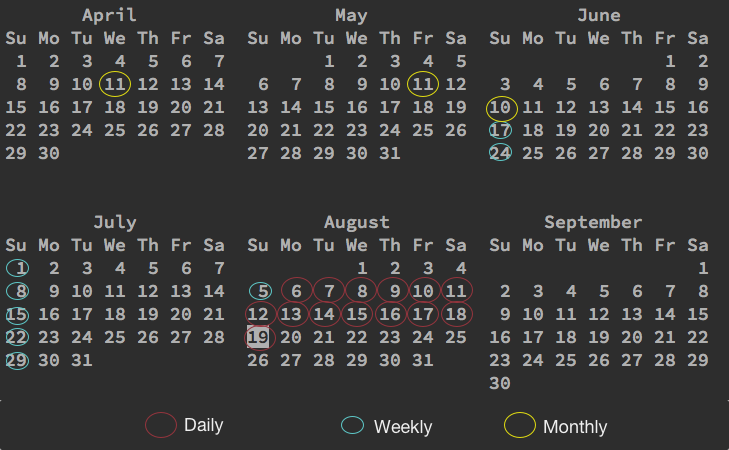The thing is that it’s only possible to answer that question under certain conditions, the most obvious one being that you actually made a backup on 31 July. Also, if you made a backup on that day, I think it would have to survive more short term pruning. I’m not sure how exactly to predict that.
So it seems to me that part of the confusion might be due to your trying to translate a system of relative times (and moving boundaries) to absolute dates…
But let’s look at the command you are referring to and figure out what it does. (I’m also doing that as an exercise for myself, as I can’t say I have fully grasped this yet in practice):
So what will duplicacy do here? First, it checks for any snapshots older than 365 days and deletes them. That part is easy.
Then it checks for snapshots older than 70 days (which in this case means: older than 70 days but younger than 365 days.). Of those, I suppose it keeps the youngest, then it looks at the second youngest one: if it is less than 30 days away from the youngest one, it is deleted. And so on until it finds one that is 30 or more days older than the youngest one identified above and it keeps that one. It will do the same for another 30 day period, and so on until it cycled through all snapshots older than 70 days.
Assuming that when this command was started, there was one snapshot for every calendar day, and today is 19 August, the above concerns snapshots from before about 9 June. So in contrast to your image, I’d say that it
will keep the 9 June snapshot but not the one from 31 May. It would keep 9 May rather than 30 April etc.
But this applies only if we still have snapshots for these days. If you previously ran the command on 31 July, the 9 May snapshot would already have been deleted so it would end up keeping 31 April because that’s the one that’s left. And so on. In other words, it matters on what date you prune for the very first time.
Okay, but let’s continue the command. Next up is -keep 7:14. Now we’re looking at the snapshots older than 14 days (but younger than 70). We keep the youngest (which is the one from 5 August). The next one to keep is the one from 7 days earlier, so from 29 July. And so on. So pretty close to what we see in your calendar. (And the difference may be my fault. I probably shouldn’t keep the one from the 5th but rather the 4th. Doesn’t matter.)
Last step: Snapshots older than 1 day (but younger than 14 days). We keep one per day, which is exactly what your calendar shows.




